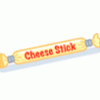I'm having issues wrapping my head around how tesselation and collision can work. My understanding of terrain tesselation is based on the nvidia demo/whitepaper: https://developer.nvidia.com/sites/default/files/akamai/gamedev/files/sdk/11/TerrainTessellation_WhitePaper.pdf
For example, an animated character moving across a (heavily) tesselated terrain such as in the demo. Given that tesselation is a shader technique, how can the two ever work together?
EDIT: Also if the tesselation is the result of shaders, how on earth do you apply lighting and shadows to it?






